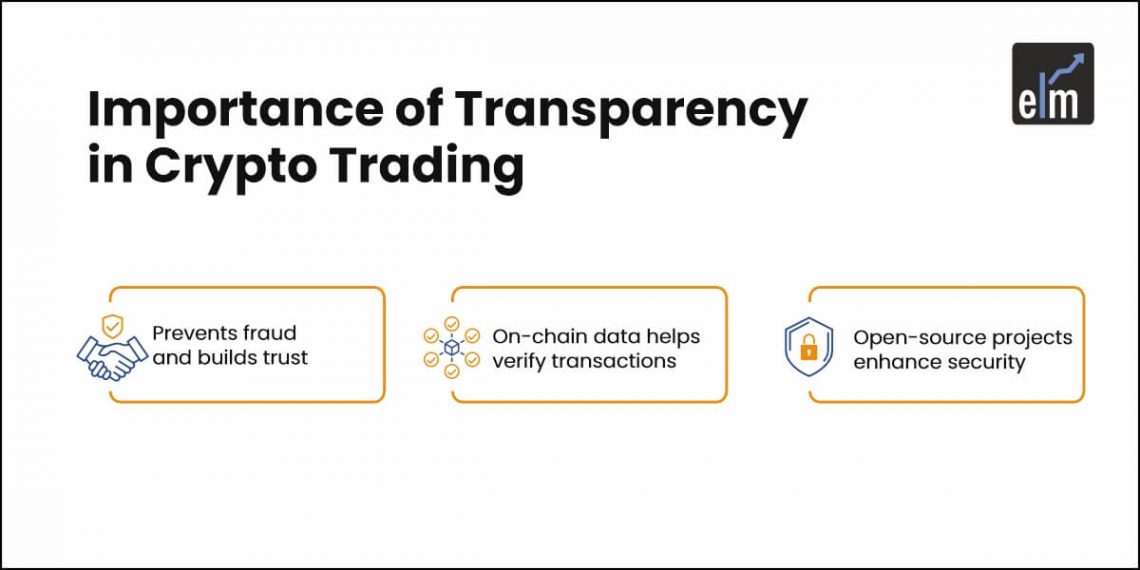When you’re investing in cryptocurrencies, whether it be Bitcoin or Ethereum, it’s really important that you can see and track all of your transactions, but also transactions further along the trading process too, so that you can ensure everything is safe and above board, but how exactly do you do that right now?
1. Why Transparency Matters (Yes, We’re Rolling Our Eyes Too, But Stick With Us)
Let’s start with the obvious: why does transparency in crypto trading matter? It’s not like we all woke up one day and said, “You know what would be fun? Sharing all our transactions with random internet strangers.” Yet transparency is the beating heart of what cryptocurrency was supposed to be in the first place—a trustless, decentralized ecosystem where the code is law and shady backroom dealings are replaced by verifiable data.
In practice, though, people and corporations sometimes prefer to keep their secrets. (Shocking, right?) Rug pulls, insider trading, and questionable coin listings can thrive in a fog of anonymity. That’s why shining a light on what’s really happening behind the scenes is critical—not just for the folks already HODLing but for newcomers too. The entire ecosystem becomes stronger, more resilient, and dare we say, more trustworthy, when everyone can see what’s what.
So if you’re on a crusade to turn crypto from a back-alley shell game into an open playing field, rest assured: you’re doing the digital world a favor. And if that’s not enough motivation, think of how great it’ll look on your LinkedIn when you list “Crypto Transparency Advocate” as one of your skills.
2. Decentralized Exchanges: A Little More “Open Kitchen,” A Little Less Mystery Meat
If you’ve ever walked into a restaurant and immediately spotted a filthy kitchen in the back, you probably turned right around and left. Well, centralized crypto exchanges can feel that way—sometimes you’re stuck trusting the establishment to not overcook the books. Sure, major centralized exchanges like Binance or Coinbase can be convenient. But convenience doesn’t always equal clarity. You might as well cross your fingers and hope the cooks aren’t sneezing all over your order.
Enter decentralized exchanges (DEXs): the “open kitchen” of crypto trading. Platforms like Uniswap, SushiSwap, or PancakeSwap let you trade directly from your wallet without handing over custody of your coins to a third party. It’s all on-chain, baby. That means if you’re curious (or just nosy), you can verify transactions on the blockchain, see how big the liquidity pools are, and basically play detective whenever you want. While DEXs can still have their share of drama (hello, impermanent loss!), the process is at least more transparent than trusting some faceless entity with your digital dough.
If you crave a little more independence and a closer look under the crypto hood, a DEX might be your jam. Of course, you’ll have to get comfortable with slightly funkier interfaces and occasionally higher fees, but you’ll sleep better knowing you’re not stuck relying on a single entity’s word to confirm your trades are on the up-and-up.
Pexels – CCO Licence
3. Riding the Blockchain Rollercoaster: On-Chain Analysis for the Win
Let’s be honest: reading the blockchain can feel like deciphering an alien language while riding a unicycle. There’s a ton of data—every transaction, wallet address, fee, and coin movement—recorded in perpetuity. It’s all out there, waiting to be uncovered by anyone who knows where to look. On-chain analysis tools help turn that swirling vortex of numbers into user-friendly visuals and graphs. Think of them as your personal translators, bridging the gap between “What does this mean?” and “Oh, so that’s where the whales are dumping their coins.”
Companies like Glassnode, CryptoQuant, and IntoTheBlock offer dashboards that break down key metrics like Bitcoin addresses holding more than 1 BTC, exchange inflows and outflows, and the current “fear and greed” sentiment. By checking these stats, you can get a sense of whether the market is about to blow up or implode—without relying solely on your cousin’s half-baked theories on Twitter.
The best part? On-chain analysis fosters transparency by making vital market info public. Instead of trusting “gurus” who claim to have secret intel, you can see for yourself if large holders are moving their stacks to an exchange (which often signals a sell-off). In a space notorious for hype and rumor, tangible data is a breath of fresh air. Granted, it won’t predict the market’s every twist and turn, but at least you’ll have a better shot than flipping a coin or reading tea leaves.
4. A Peek at the Code: Open-Source Projects & The Power of GitHub
Ever had a friend who refuses to show you what’s in their closet? They might be hiding questionable fashion choices—or maybe they’re just private. But in crypto, “private code” can raise eyebrows faster than a suspiciously timed token listing. If a project claims to be the Next Big Thing but won’t reveal how it actually works, that’s a big red flag waving in your face. Reputable crypto projects typically open-source their code on GitHub or similar platforms so anyone can comb through it and spot vulnerabilities or shady lines of code.
Of course, not all of us are coding geniuses who can dissect lines of Solidity in our sleep. But the open-source ethos still matters, because it means some brilliant folks can check the code, and they often do. Whether they’re white-hat hackers seeking bug bounties or just curious members of the community, these code-watchers serve as an unofficial security council. The more eyes on the code, the lower the chance some sneaky developer can insert a nuclear meltdown function that vaporizes your tokens at 3:00 AM on a Tuesday.
Bottom line: If you’re looking for transparency in a project, see if they’re open-source. If they’re not, either ask them politely why not, or run in the other direction while you still can.
5. Using a Multichain Block Explorer: The Sherlock Holmes of Crypto Investigations
One of the most powerful tools in the transparency toolbox? The trusty blockchain explorer. But wait—did you know there’s something called a multichain block explorer? Picture a single platform that lets you sleuth your way across various blockchains. Instead of switching between multiple tabs (and risking a meltdown of your poor CPU), you get to streamline your detective work. Want to see if a wallet on Ethereum is also up to something on Binance Smart Chain or Polygon? A solid multichain block explorer might let you do just that, no sweaty detective hat required.
Now, if you’ve never used a block explorer before, get ready to feel like you’ve stumbled into the Matrix. You’ll see columns of transaction hashes, wallet addresses, block numbers, and timestamps—basically, all the raw data you could ever want. It might look like an indecipherable code, but once you get the hang of it, you’ll realize it’s your key to verifying trades, sniffing out suspicious activity, and confirming that yes, your big transaction did actually go through at 3:17 p.m.
Still, proceed with caution. Block explorers can be addictive. You might find yourself scanning every transaction your ex’s new crypto startup makes, or tracking the movements of that one whale address you suspect belongs to Elon Musk’s hairdresser. The rabbit hole is deep, but the knowledge you’ll gain is chef’s kiss valuable.




